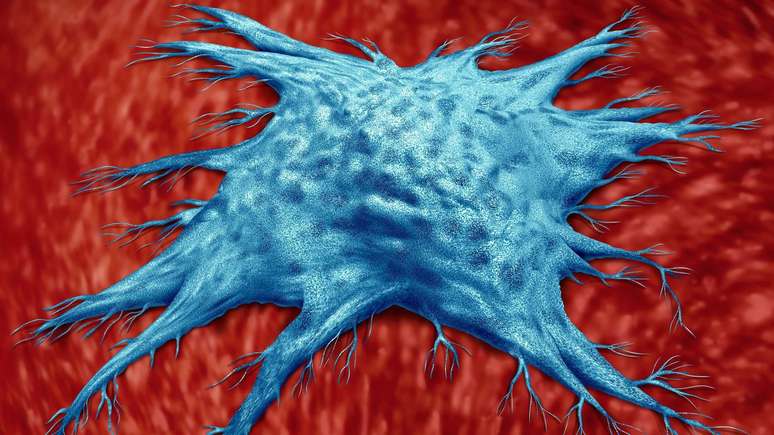These cells release harmful molecules that degrade tissues, causing age-related diseases.
They are widespread throughout our body, from the brain to the liver, and work by releasing harmful molecules that degrade tissues, affecting cognitive functions, increasing fragility and weakening the immune system. And their number increases with age.
We are talking about senescent cells, often called “zombie cells”.
As we age, cells end up going through a process of “senescence,” a state in which they stop growing and dividing, but resist death and continue to release a harmful combination of harmful biological signals.
When a person is young, the immune system is able to eliminate senescent cells. But many manage to persevere, contributing to age-related health problems and diseases.
That’s why for over a decade several teams of scientists have been researching ways to destroy these cells and thus stop the problems of aging.
What is the secret to aging healthily?
Illness, injury and other stressors damage cells throughout our bodies.
Ideally, our immune system eliminates damaged cells through a process called apoptosis.
But as we age, our bodies are no longer as effective at eliminating dysfunctional cells – and this can contribute to a weakened immune system and other less efficient biological processes.
What more and more researchers are exploring is whether cellular senescence could be the secret to revitalizing aging tissues and increasing healthy life years.

In the dozens of clinical trials currently being conducted on senescent cells, researchers are using everything from drugs – new and adapted – to biomarkers and genetic tools to reprogram and kill these cells, in the hope of ending diseases associated with advancing age. ‘age.
In a study published in October 2023 in the scientific journal Aging Cell, researchers from the Mayo Clinic in Rochester, Minnesota, USA, analyzed senescent cells to explain aging at the cellular level.
“We know that people age at different rates and that a person’s chronological age does not always match their biological age,” Jennifer St. Sauver, lead author of the study, said in a statement.
“We found that a group of different proteins released by zombie cells can function as biomarkers of senescence and predict health-related outcomes in older adults.”
The researchers also found that measuring these biomarkers in the blood can help predict mortality beyond the combination of chronological age, sex, and the presence of a chronic disease.
Senescent biomarkers
1,923 people aged 65 and older participated in the study, of whom 68% had no chronic disease and 32% had some condition, such as arthritis, high cholesterol and a history of cancer.
The researchers found that high levels of senescent biomarkers (molecules in the blood with signs of senescence) were associated with a higher risk of death.
These biomarkers have already been associated in the past with the development of chronic diseases, such as heart failure and some types of cancer.
The researchers believe that these biomarkers could one day be used in clinical practice as tools to identify people at risk of developing certain diseases.
And research is currently underway on how lifestyle factors – diet, physical activity and medications – can help eliminate senescent cells.

Use of senolytics against aging
A study published in 2015, also conducted at the Mayo Clinic in Rochester, found that a combination of two compounds – dasatinib and quercetin – was able to kill senescent cells in aged mice.
After applying the compounds, the animals became less fragile, their running endurance increased, and their hearts were rejuvenated.
The discovery gave rise to a new area of medicine called senolytics.
Since then, a series of animal and human studies have been published, in which new and adapted drugs are being tested that could have sanolytic properties against age-related diseases.
“I am convinced that sanolytics will have an impact on medicine,” said Anirvan Ghosh, CEO of Unity Biotechnology, a company in San Francisco, California, that is developing sanolytics.
“I think the question is, in effect, what will the (senolytic) agent be like and what will be the first approved medicine,” an expert added to the scientific journal Nature.
But the study of sanolytic agents, most of which are anticancer compounds that have been repurposed, is still in a preliminary stage.
The researchers point out that there is still a long way to go – perhaps decades – to ensure that these medicines can be used safely in humans.
And there are still many questions that scientists have not been able to answer.
For example, in the laboratory cells can take weeks to become senescent, but how long does this process take in the human body? How long do senescent cells last? And can all cell types become senescent?
Senolytics will kill cells, scientists warn, and the biological and physiological consequences of eliminating cells that will not be replaced are not yet known.
Source: Terra
Ben Stock is a lifestyle journalist and author at Gossipify. He writes about topics such as health, wellness, travel, food and home decor. He provides practical advice and inspiration to improve well-being, keeps readers up to date with latest lifestyle news and trends, known for his engaging writing style, in-depth analysis and unique perspectives.









